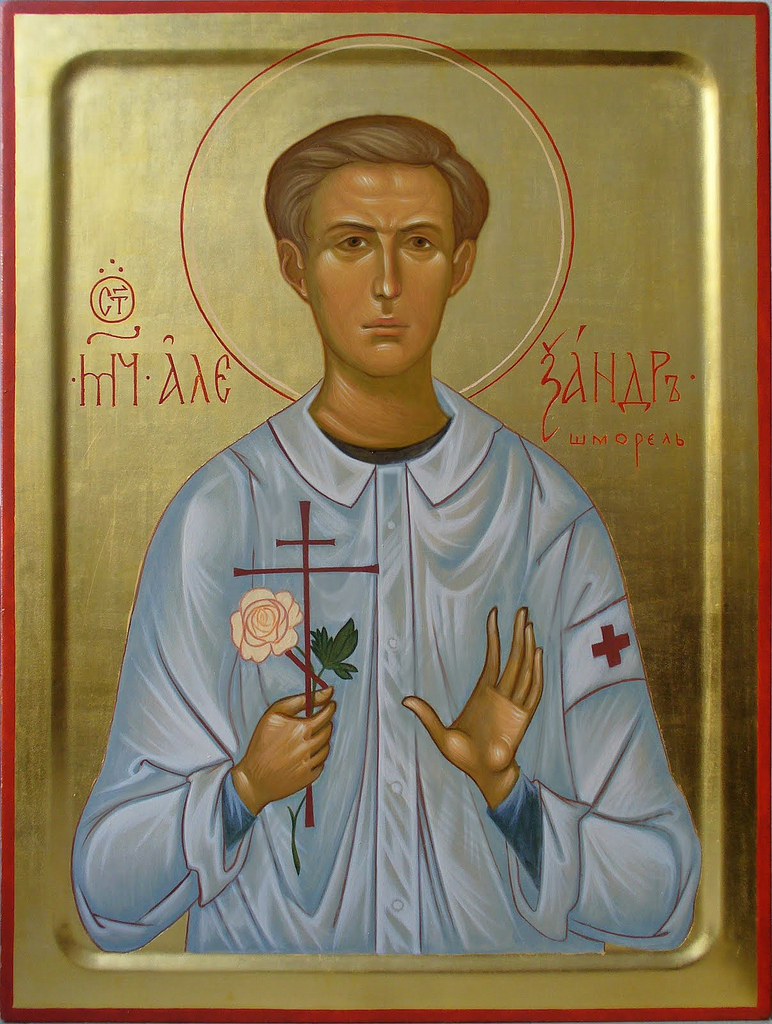
Saints come in many sizes and varieties, ranging from kings to beggars, surgeons to street sweepers, scholars to the illiterate, the extraordinary to the unnoticed. Some never marry, some are the parents of large families. Some die in bed in their old age, others die early in life at the hands of executioners. There are millions of saints -- heaven is crowded -- but relatively few of heaven’s population have been formally canonized. The vast majority are rank-and-file saints, an inspiration to those who knew them, but never placed by name on the church calendar.
Reporting on canonizations, journalists often say that so-and-so was “made a saint” today at such-and-such location, but in fact the Church does not make saints. Canonization is merely an act of carefully considered recognition that a particular person became a saint in his lifetime and is unquestionably among the blessed and thus in no need of our prayers for his forgiveness and salvation. The saints who are singled out for special recognition are mentioned at the Liturgy on a particular day every year, some locally or nationally, others in churches around the world. They are also depicted in icons in both churches and homes.
What is it that makes the Church occasionally canonize a particular saint? In many cases it has to do with some remarkable quality or achievement -- their exceptional impact on other lives. The memory of their works and lives needs to be passed on from generation to generation in order to encourage others to follow in their footsteps. It is one of the ways the Church declares, “This is sanctity. This is the path to eternal life.”
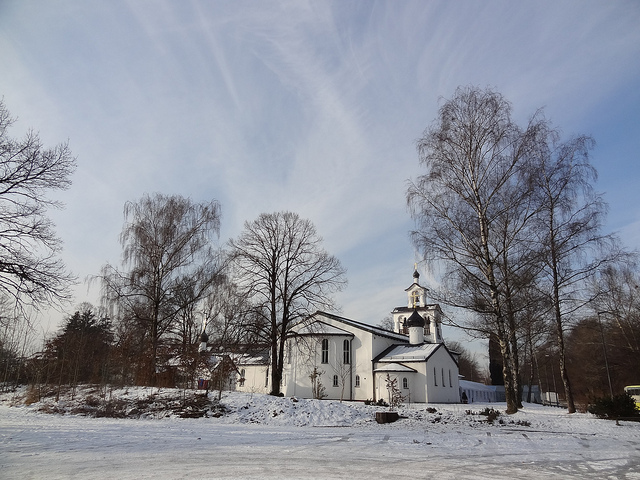 The majority of those canonized are martyrs. One of these -- Alexander Schmorell -- was added to the church calendar this past weekend. His canonization took place at the Cathedral of the New Martyrs and Confessors of Russia, a church in Munich not far from Schmorell’s grave. On the far side of the cemetery, at Stadelheim Prison, Schmorell was beheaded on 13 July 1943. He was only 25 at the time. He was an Orthodox Christian who had put his life at risk by being part of a anti-Nazi resistance group.
The majority of those canonized are martyrs. One of these -- Alexander Schmorell -- was added to the church calendar this past weekend. His canonization took place at the Cathedral of the New Martyrs and Confessors of Russia, a church in Munich not far from Schmorell’s grave. On the far side of the cemetery, at Stadelheim Prison, Schmorell was beheaded on 13 July 1943. He was only 25 at the time. He was an Orthodox Christian who had put his life at risk by being part of a anti-Nazi resistance group.The canonization got underway on Saturday afternoon, February 3, as people began to gather in the church. Aware that the reporters and cameramen present would need certain photos before the ceremonies started, Fr. Nikolai Artemoff, dean of the cathedral, brought out the icon of Alexander Schmorell in anticipation of its formal presentation later in the day. Many photos were taken, a pre-canonization ceremony that would not have been imagined in earlier centuries. The icon showed Alexander Schmorell as the tall, brown-haired young man he was, wearing the white robe of a physician with a Red Cross arm band (he had been a medical student at Munich’s Maximilian University), his left hand raised in a gesture of greeting, the other holding a blood-red cross plus a white rose. He is standing against a pure gold background representing eternity and the kingdom of God.
As Father Nikolai explained to the journalists, the white rose in his hand symbolizes the White Rose group Schmorell co-founded with Hans Scholl in the spring of 1942. Before the arrests began the following February, the group succeeded -- assisted by friends in many German and Austrian cities and towns -- in widely distributing a series of six anti-Nazi leaflets. All six members of the core group were guillotined. (The story is powerfully told in an the Oscar-nominated film, “Sophie Scholl – The Final Days,” much of which was photographed in Munich.)
 Press photos taken and interviews completed, at about 4 PM a procession of about two hundred people set out led by a cross bearer. Behind the cross were six bishops: Archbishop Mark (who leads the Russian Orthodox Church Outside Russia in Germany), Metropolitan Valentin of Orenburg (the Russian city where Schmorell was born), Metropolitan Onufriy of Czernowitz in Ukraine, Archbishop Feofan of Berlin, Bishop Michael of Geneva, and Bishop Agapit of Stuttgart. How many priests? I lost count.
Press photos taken and interviews completed, at about 4 PM a procession of about two hundred people set out led by a cross bearer. Behind the cross were six bishops: Archbishop Mark (who leads the Russian Orthodox Church Outside Russia in Germany), Metropolitan Valentin of Orenburg (the Russian city where Schmorell was born), Metropolitan Onufriy of Czernowitz in Ukraine, Archbishop Feofan of Berlin, Bishop Michael of Geneva, and Bishop Agapit of Stuttgart. How many priests? I lost count.The frigid air was challenging -- it was about 15 degrees below zero Centigrade (5 degrees Fahrenheit), with snow and ice on the ground. Though the cemetery, Perlacher Forst, was just across the street, its entrance was several hundred meters away. Once inside the gate, we wound our way through tombstone-lined paths, first stopping to pray at the graves of Hans and Sophie School, the brother and sister who were the first to be executed from the White Rose group, and Christoph Probst, beheaded the same day -- 22 February 1943. Here three tall black crosses stand side by side, a single cross piece linking the crosses over the Scholl graves. Sophie, the one woman in the White Rose inner circle, and the youngest, was 21 when she was killed. Today many German streets and squares are named in honor of Sophie and Hans Scholl, Alexander Schmorell, Christoph Probst and others executed for their part in the White Rose. Hans and Sophie came from a closely-knit Lutheran family. Christoph Probst was baptized in the Catholic Church a day before his execution.
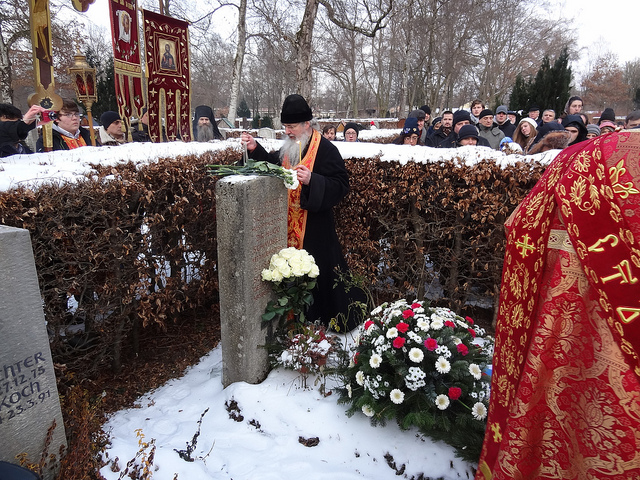 The procession than continued to Alexander Schmorell’s resting place, not far away. A bouquet of white roses was resting against the rough surface of the tombstone and more flowers heaped over the grave. Embedded in the stone was a bronze Russian Orthodox crucifix. Memorial prayers -- a panikhida -- was sung, concluding with the melodic two-word chant, Vyechnaya Pamyat (eternal memory), sung repeatedly by all present. Every year there has been a panikhida sung at this grave on the 13th of July, the anniversary of Schmorell’s death, but this was the final panikhida. Now that he has been officially glorified, future services at his grave no longer have a penitential character.
The procession than continued to Alexander Schmorell’s resting place, not far away. A bouquet of white roses was resting against the rough surface of the tombstone and more flowers heaped over the grave. Embedded in the stone was a bronze Russian Orthodox crucifix. Memorial prayers -- a panikhida -- was sung, concluding with the melodic two-word chant, Vyechnaya Pamyat (eternal memory), sung repeatedly by all present. Every year there has been a panikhida sung at this grave on the 13th of July, the anniversary of Schmorell’s death, but this was the final panikhida. Now that he has been officially glorified, future services at his grave no longer have a penitential character.The high point of the day came during the Saturday evening Vigil, which began at 5 PM and lasted three-and-a-half hours, by which time an almost full moon was shining through the windows. In the middle of the service, several icon stands were placed in the center of the church with candle stands behind. At least a hundred candles were lit, forming a curtain of light. Finally a procession of bishops, clergy and altar servers poured out of the sanctuary carrying an icon of Saint Alexander Schmorell followed by another icon crowded with images of New Martyrs of the twentieth century. Next came a huge silver-bound Gospel book, a copy that had been a gift from Russia’s last czar, Nicholas II, to Russian Orthodox Christians in Germany. The two icons and the Gospel book were solemnly placed side by side on the stands, then incensed. Finally everyone in the church, beginning with the six bishops, venerated the icon of the newly recognized saint.
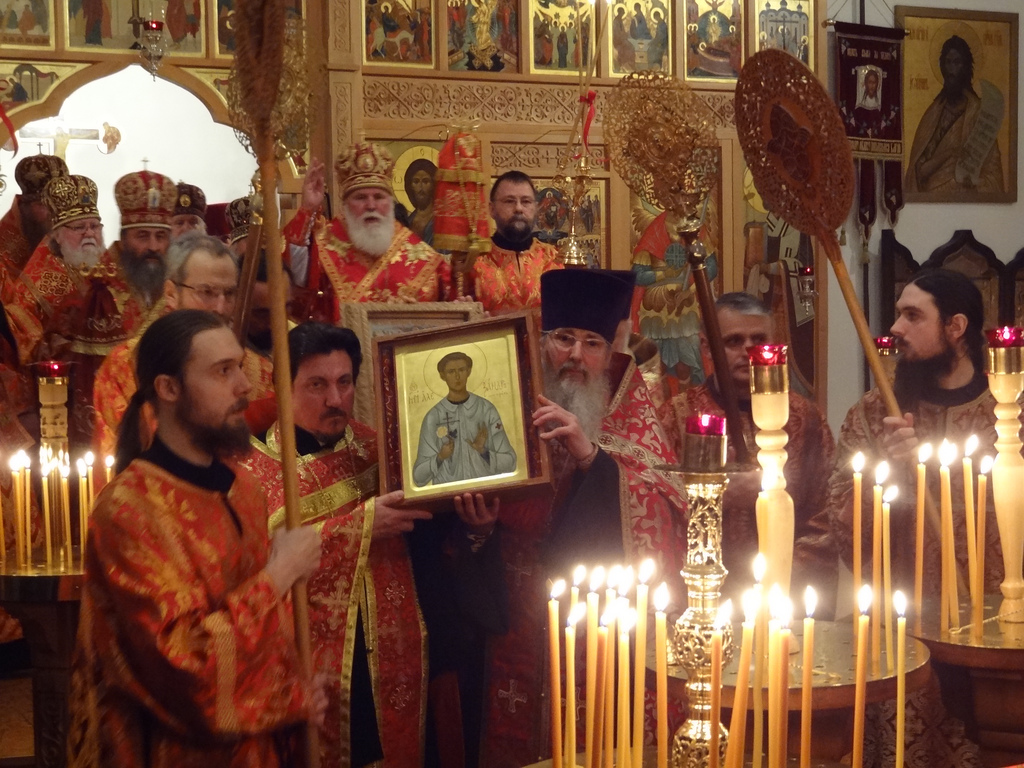 “When they brought out the icon,” Nancy told me later that night, “it was such a climax, with the servers holding all those fans over the icons and the choir singing with such exaltation. It was as it there were neon arrows pointing at the icon of Alexander Schmorell and saying, ‘This is what really matters.’ It’s the Church pulling out all the stops. They couldn’t do more to make you look in that direction and feel the importance, the challenge, of this brave life. You couldn’t not get it. This is what the Church does in interpreting human events and letting us know what’s truly valuable. This is something that requires all the ceremony the Church is capable of. But it’s not ceremony for its own sake. It’s all meant to confront us with the inner meaning of a young man putting his head on the chopping block. The canonization ceremony pulls you out of ordinary time and confronts you with the message: consider this life and let it influence your own.”
“When they brought out the icon,” Nancy told me later that night, “it was such a climax, with the servers holding all those fans over the icons and the choir singing with such exaltation. It was as it there were neon arrows pointing at the icon of Alexander Schmorell and saying, ‘This is what really matters.’ It’s the Church pulling out all the stops. They couldn’t do more to make you look in that direction and feel the importance, the challenge, of this brave life. You couldn’t not get it. This is what the Church does in interpreting human events and letting us know what’s truly valuable. This is something that requires all the ceremony the Church is capable of. But it’s not ceremony for its own sake. It’s all meant to confront us with the inner meaning of a young man putting his head on the chopping block. The canonization ceremony pulls you out of ordinary time and confronts you with the message: consider this life and let it influence your own.”At the Liturgy the following morning, the church was even more crowded than it had been for the Vigil. We were jammed together like cigarettes in a carton -- it was challenging to make the sign of the cross without grazing your neighbors with your elbows. Perhaps as many people were present as would fill the church for the All-Night Easter service. (Also present on Sunday-- give a special chair placed at the right end of the iconostasis -- was Bishop Engelbert Siebler, representing the Catholic Archdiocese of Munich.)
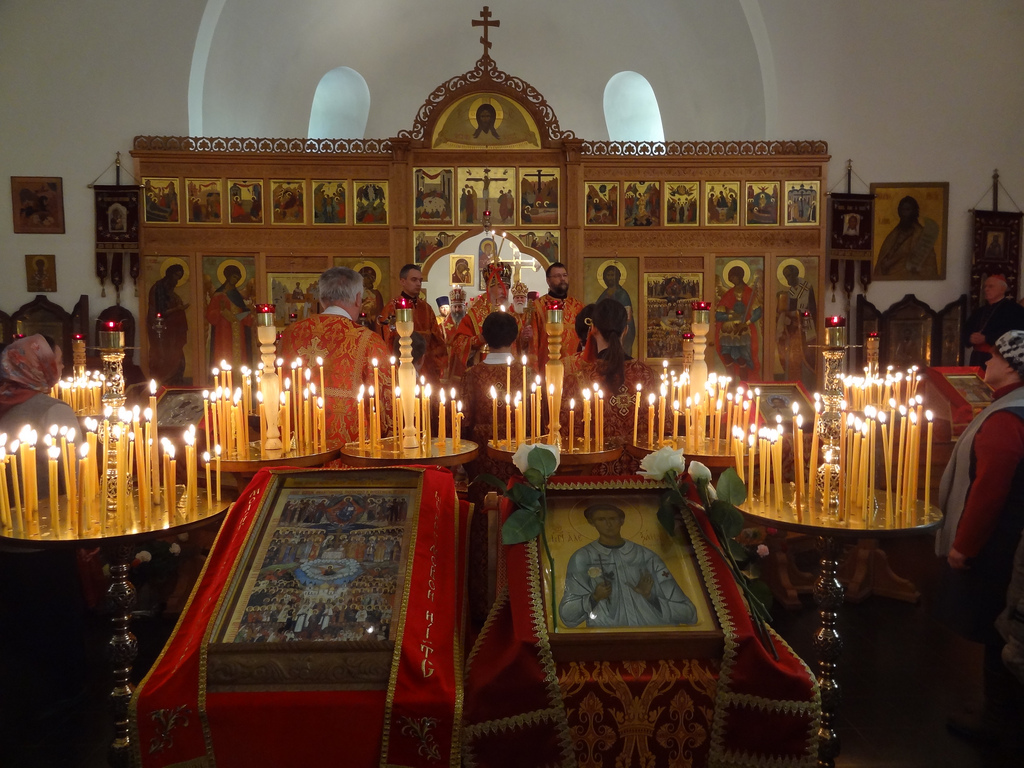 In the Orthodox Church every Sunday is regarded as a little Easter, but rarely have I experienced so intense a paschal radiance. Resurrection was at the heart of Father Nikolai’s sermon, delivered just before communion. He reminded us that the name the White Rose group adopted for itself had been proposed by Alexander Schmorell. His suggestion came from a story in the novel The Brothers Karamazov, written by Schmorell’s most beloved author, Dostoevsky. In one chapter Christ comes back to earth, “softly, unobserved, and yet, strange to say, every one recognized Him.” He is suddenly present among the many people in Seville’s cathedral square, a place were the pavement is still warm from the burning of a hundred heretics. Responding to a mother’s desperate appeal, Christ raises from the dead a young girl whose open coffin was being carried across the square on its way to the cemetery. Flowers have been laid on her body. “The procession halts, the coffin is laid on the steps at [Christ’s] feet. He looks with compassion, and His lips softly pronounce the words, ‘Maiden, arise!' and she arises. The little girl sits up in the coffin and looks round, smiling with wide-open wondering eyes, holding a bunch of white roses they had put in her hand.” This merciful action completed, he is recognized by the Grand Inquisitor, who orders Christ’s arrest.
In the Orthodox Church every Sunday is regarded as a little Easter, but rarely have I experienced so intense a paschal radiance. Resurrection was at the heart of Father Nikolai’s sermon, delivered just before communion. He reminded us that the name the White Rose group adopted for itself had been proposed by Alexander Schmorell. His suggestion came from a story in the novel The Brothers Karamazov, written by Schmorell’s most beloved author, Dostoevsky. In one chapter Christ comes back to earth, “softly, unobserved, and yet, strange to say, every one recognized Him.” He is suddenly present among the many people in Seville’s cathedral square, a place were the pavement is still warm from the burning of a hundred heretics. Responding to a mother’s desperate appeal, Christ raises from the dead a young girl whose open coffin was being carried across the square on its way to the cemetery. Flowers have been laid on her body. “The procession halts, the coffin is laid on the steps at [Christ’s] feet. He looks with compassion, and His lips softly pronounce the words, ‘Maiden, arise!' and she arises. The little girl sits up in the coffin and looks round, smiling with wide-open wondering eyes, holding a bunch of white roses they had put in her hand.” This merciful action completed, he is recognized by the Grand Inquisitor, who orders Christ’s arrest.The white rose is a paschal symbol, a sign of the victory of life over death.
That Alexander Schmorell would one day be canonized at this cathedral had been evident for years. He is shown among of a row of twenty-two martyrs of the twentieth-century included in an icon that has long been part of the cathedral’s iconostasis. After the Liturgy and the emptying out of the church, I went to look more carefully at that older icon. Schmorell is easily picked out -- there he is, in the first row, third from the right, wearing a white robe. What is remarkable is that, within the group, he alone group has no halo, for at the time the icon was painted canonization was only anticipated. In one hand he holds a thin cross, in the other a scroll with these words taken from his last letter to his parents:
“This difficult ‘misfortune’ was necessary to put me on the right road, and therefore was no misfortune at all…. What did I know until now about belief, about a true and deep belief, about the truth, the last and only truth, about God? Never forget God!!”
 One can imagine future icons of Saint Alexander of Munich will often use the same text while other iconographers may decide to use his last words, spoken to his lawyer as he was being taken to the guillotine: “I’m convinced that my life has to end now, early as it seems, because I have fulfilled my life’s mission. I wouldn’t know what else I have to do on this earth.”
One can imagine future icons of Saint Alexander of Munich will often use the same text while other iconographers may decide to use his last words, spoken to his lawyer as he was being taken to the guillotine: “I’m convinced that my life has to end now, early as it seems, because I have fulfilled my life’s mission. I wouldn’t know what else I have to do on this earth.”-- Jim Forest
* * *
Hymns sung at the glorification of Saint Alexander of Munich (annual commemoration day July 13):
Troparion, tone 4:
Today a light adorns our glorious city, / having within it your holy relics, O Holy Martyr Alexander; / for which sake pray to Christ God / that He deliver us from all tribulations, / for gathered together in love we celebrate your radiant memory / imitating your bravery, / standing against the godless powers and enemies.
Kontakion, tone 4:
From your mother you did inherit the love of Christ, / and through the love of your care-giver you were nourished in the fear of God, O all-glorious one, / to Whom you did give thyself, O all-honorable Alexander, / and you diligently pray with the angels. / Entreat on behalf of all who honor your memory a forgiveness of their sins.
* * *
A great deal of information about Saint Alexander is on the web, especially on the web site of the Russian Orthodox Church Outside Russia in Germany: www.sobor.de
A biographical essay (“Alexander Schmorell: a Witness in Dark Times”) is here: www.jimandnancyforest.com/2011/02/02/alexander-schmorell-a-witness-in-dark-times/
An English translation of Schmorell’s letters from prison:
www.katjasdacha.com/whiterose/alexbriefe_e.html
A set of photos of the canonization:
www.flickr.com/photos/jimforest/sets/72157629206699911/with/6832060277/
A set of photos having to do of the White Rose:
www.flickr.com/photos/jimforest/sets/72157625346459536/with/5161067764/
* * *
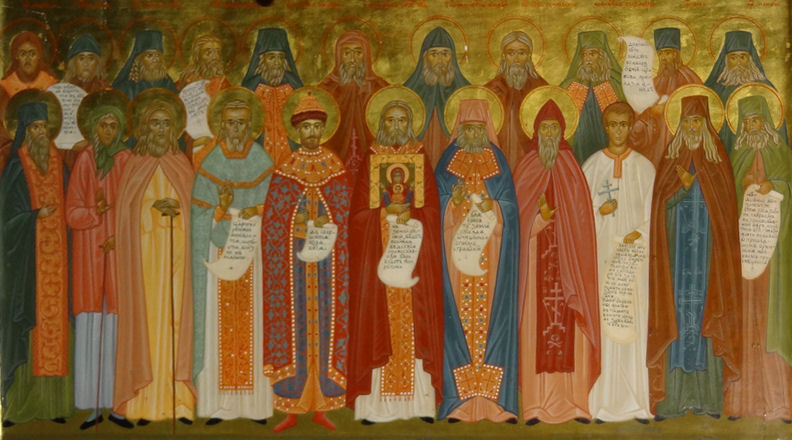

1 comment:
Thank you for sharing this experience in words and pictures with us. I am happy to know about this new Saint's life and canonization. Pray for us, St. Alexander!
Post a Comment